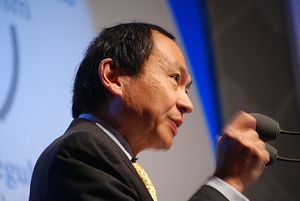Political scientist Francis Fukuyama’s new book Political Order and Political Decay: From the Industrial Revolution to the Globalization of Democracy is a masterpiece whose nuances cannot easily be captured in any review. It is the sequel to a previous volume that describes political evolution until the French Revolution; the present volume picks up the same story in the modern era. In short, Fukuyama’s book describes the conditions necessary for and the characteristics of successful modern states. The work rests on a broad body of knowledge of political theory, anthropology, history, and the nature of institutions. Those interested in the gist of Fukuyama’s argument can check out a variety of reviews in major newspapers. However, this book is worth a read by any who are serious about understanding modern political problems from a macroscopic perspective. For the benefit of Diplomat readers, I’ve chosen to highlight three interesting takeaways that Fukuyama makes with regards to Asia.
First, seemingly chaotic and corrupt democracies can actually be beneficial to their people on some level, especially in terms of social mobility. Fukuyama points out that the United States in the 19th century consisted of many patron-client networks, similar to those seen in today’s developing countries. In exchange for votes, often from poor or immigrant groups, up-and-coming politicians were able to increase their power and establish political machines while giving their supporters positions, perks, and benefits. This helped such groups become a part of the system while also gaining access to public goods and services in areas where they would have otherwise been marginalized. This system brings to mind India and its political system over the past few decades, with its plethora of ethnic, regional, and caste based parties. Although India is largely panned for the influence of such parties – known for corruption and pandering to “vote banks” – the power of such parties may have actually helped underrepresented groups in India such as minorities and lower castes gain access to some posts and goods and services. Given the ineffectual nature of the Indian state and bureaucracy, these groups may have otherwise have remained almost completely unaided by state services. Fukuyama thus provides an interesting and novel way at looking at the phenomenon of corruption in India.
Second, we can come to appreciate the fact that the effectiveness of the state, rather than corruption, is really the main problem. Effective, strong states, whether democracies or autocracies, implement their laws and services while ineffective states do not, regardless of their type of government. According to a leading corruption index, India is only slightly more corrupt than China and much less corrupt than Russia. However differences between the countries amounts to the strength of their states, not corruption or their political system. While Chinese bureaucrats may take an extra cut, they still manage to effectively implement their government’s policies — unlike in India. In an example cited by Fukuyama, 48 percent of Indian teachers fail to show up to work in rural areas. It is hard to image such a thing occurring in China, even if it became a democracy (as is evidenced by the quality services found in ethnic-Chinese dominated countries such as Taiwan and Singapore).
Finally, the good news is that there’s a way out of an ineffective state and that’s by creating an efficient, meritocratic civil service. However, the bad news is that it may be difficult to implement outside of East Asia. Fukuyama points out that East Asian countries, including South Korea and Japan, have a strong track record of providing quality governance due to their Confucian influence. A country like Japan was able to modernize fast due to this strong tradition of the government’s writ running large all over society, in contrast to the Ottoman Empire. It is not enough to establish an autocratic government; in dictatorships without efficient administration, corruption and patronage will simply develop through that system and its factions. It is not enough to establish a democracy with a strong bureaucracy for the same reasons. India has a large bureaucracy, but it has so many rules that only some can be applied, leading to their arbitrary application by bureaucrats looking to favor their friends and families.
Non-Asian countries like Britain and Prussia were able to establish effective bureaucracies because they were working with a small group of educated individuals who had similar backgrounds. Additionally, they were able to do so before they became democracies, preventing their state machinery from getting captured by patronage-doling politicians. However, the best model for other countries, especially ones like India that are already democracies, is to try to emulate the United States and the manner by which it established fairly effective governance in the 20th century. The United States was able to utilize motivated groups of technocratic individuals to staff its new agencies. Additionally, under strong presidents such as Theodore Roosevelt and Franklin Delano Roosevelt, the government was able to overcome patronage networks and establish new institutions. In lieu of a Confucian heritage, democracies such as India might wish to look at the American example rather than the Chinese one.

































